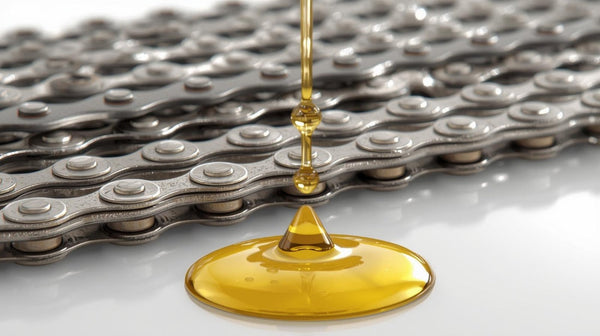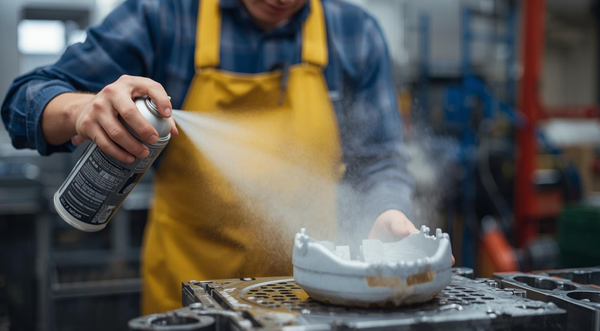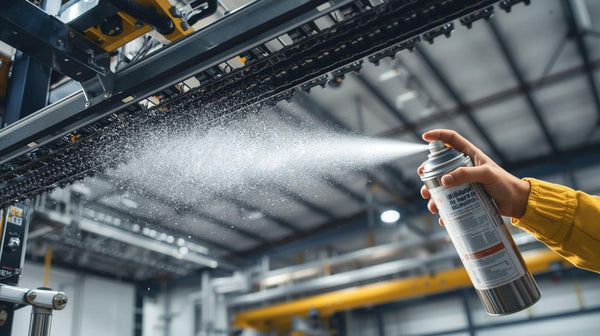Refrigeration grease - what is the best grease for devices operating at low temperatures?
Cold stores and cooling tunnels are places with extreme working conditions, which place specific demands on the devices and lubricants used in them. Working in such conditions requires the use of lubricants that will withstand low temperatures and will not lose their properties under intense mechanical load. In this article, we will look at what properties a good lubricant for cold stores should have, what to look for when choosing one, and what options are available on the market in this regard.

Lubrication of elements and devices operating at low temperatures is a key element ensuring the efficiency and longevity of machines. In cold stores, due to low temperatures, classic lubricants can lose their properties, leading to increased friction and, consequently, faster wear of moving elements, such as sliding guides or transport elements in cooling tunnels. That is why it is so important to use a grease specially adapted to work at low temperatures.
Low temperatures, combined with moisture, can cause condensation in equipment, which in turn leads to corrosion of metal parts. A grease with the right anti-corrosion properties that also maintains plasticity and adhesion at low temperatures is an absolute necessity for the efficient operation of the refrigeration plant and the equipment working in it.
What requirements should a refrigeration grease meet?
- Must be resistant to low temperatures
The grease used in refrigeration units should be adapted to extremely low temperatures. Low-temperature greases are formulated to maintain their properties at temperatures well below freezing, often down to -40°C. It is worth choosing a product that will not harden or lose viscosity at such temperatures. - It should protect against corrosion
The humid environment in cold stores promotes the formation of rust on metal parts. Therefore, the lubricant must have anti-corrosion properties to protect machine parts from rusting. - The grease should have excellent adhesion to the surface
The grease for sliding guides and other moving parts in cold stores must adhere permanently to the surface and prevent washing out in high humidity conditions. High-adhesive greases work well on metal and plastic surfaces, as well as in places where there is constant movement. - Refrigeration lubricant must be compatible with plastic and metal components.
Many refrigeration units have parts made of both metal and plastic. Therefore, a white low-temperature grease for plastic and metal must be neutral and safe for both types of materials so as not to cause degradation or deformation.
Which Refrigeration Grease to Choose? Key Types and Their Applications
- Grease for sliding guides
Sliding guides in cold stores are particularly susceptible to wear. Constant movement and high humidity mean that an inappropriate lubricant will quickly lose its properties, which can lead to them becoming blocked. Lubricant for sliding guides in cold stores should have low friction, be resistant to moisture, and not lose its properties at low temperatures. - Cooling tunnel grease
Cooling tunnels require a lubricant that will not only operate at low temperatures but will also be food safe if such an application is required. Synthetic lubricants are worth considering here, as they are more durable and offer better protection at extreme temperatures than mineral lubricants. - White low temperature grease for plastic and metal
White synthetic grease, especially Teflon-based formulas, is ideal for refrigeration because it has excellent lubricating properties, is resistant to water and moisture, and is neutral towards materials such as plastic and metal. This is why it is used in a variety of refrigeration equipment, such as freezers or ice cream makers.
Benefits of using a properly selected refrigeration grease
- Reducing the risk of failure
Low temperature greases are formulated to withstand the harsh conditions of cold storage and prevent failures due to increased friction or corrosion. Regular lubrication with the right products reduces the risk of failure and therefore reduces repair and downtime costs. - Extending the life of your devices
Using the right grease for cold stores significantly extends the life of your equipment. Thanks to this, elements such as sliding guides, bearings, rollers or shafts remain in good technical condition for a longer period of time, which has a positive effect on the efficiency of your equipment. - Cost optimization
Although specialist greases may be more expensive than standard lubricants, their longer life and efficiency make them more cost-effective. Investing in a good grease for refrigeration can reduce costs resulting from frequent downtime or replacing worn parts.
What elements should you pay attention to when selecting and purchasing grease for a refrigeration unit?
When choosing a lubricant for a refrigeration plant, it is worth considering several key parameters:
- Operating temperature range – Lubrication at extremely low temperatures requires products that will not lose viscosity and lubrication properties over a wide temperature range, even down to -60°C.
- Grease composition – Synthetic greases are more durable and effective in extreme conditions than mineral greases, but it is also worth considering PAO greases based on Teflon, which have very good protective and sliding properties.
- Safety and standards – For food processing refrigeration applications, it is important that the lubricant has appropriate safety certifications, such as NSF H1, which confirm that it is safe to use in areas where food contact may occur.
- Cost vs. Quality – Cheap lubricants may seem like an attractive option, but their lower quality often means they won’t be as effective in cold temperatures and will need to be applied more often.
ABS Serwis offers many greases designed for lubrication of elements operating at low temperatures, and one of the latest is the white grease Molykote EM-60L, developed for the needs of many industries. or Molykote 33 medium.
Molykote EM60L plastic grease
based on a chemical base defined as: synthetic PAO Polyalphaolefin with elements of solid lubricants intended for central lubrication systems, compatible with rubber and plastics, ensures low noise levels and high efficiency at low temperatures.
The recommended operating temperature range is low temperature: less than -60°C and high up to 130°C. NLGI consistency is about 0.5 NLGI and the range of applications is industry and maintenance and repairs of machines and devices and the automotive industry and plastic-metal moving elements including sliding guides, control cables, lubrication of rubber and elastomers, lubrication of plastics and slow-speed bearings.
Molykote 33 medium Bearing Grease recommended for bearings
Wide temperature grease for light load applications where metal-to-metal or metal-to-plastic friction occurs at low and high speeds
Why do we choose Molykote EM-60L or 33 medium grease when we have a choice of many refrigeration lubricants?
This is mainly due to its unique advantages including:
- compatible with most plastics
- long service life
- low permeability, so it can be used in places where cleanliness is required
- does not contain silicone, which prevents problems with contact point failures
- can be used on a wide range of surfaces from plastic/plastic, metal/metal to plastic/metal.
Concluding our discussion on grease for cold stores and freezing tunnels, we can see that choosing the right grease for cold stores is key to reliable operation of devices at low temperatures. Good quality grease for sliding guides, grease for cold tunnels and white grease for low temperatures for plastic and metal will ensure failure-free and efficient operation of devices.
.
















